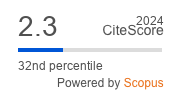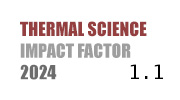THERMAL SCIENCE
International Scientific Journal
Authors of this Paper
External Links
MULTICRITERIA ANALYSIS OF RECYCLED TEXTILE AND CONVENTIONAL THERMAL INSULATION MATERIALS THROUGH ECOLOGICAL AND ECONOMIC CRITERIA
ABSTRACT
The textile industry is the second most environmentally polluting industry in the world after the petroleum industry. Approximately 25% of global chemicals are used in textile production, around 10% of the world's CO2 emissions are generated by the textile industry, and it consumes more water than any other industry. Annually, about 92 million tons of textile waste are produced, with only an estimated 10%-30% of the waste being recycled. Textile waste can be reused or recycled using various methods for thermal insulation materials. The aim of this study is to analyze and compare recycled thermal insulation materials with conventional thermal insulation materials based on economic and environmental criteria. By using the DEXi software tool, a multicriteria analysis was conducted between re-cycled textile and conventional thermal insulation materials based on economic and environmental criteria. In terms of economic and environmental criteria, conventional thermal insulation materials have an advantage over thermal insulation materials made from recycled textiles. In conclusion, the decision on which option is better depends on the specific requirements of the project. If sustainability is a key priority, based on all available information, thermal insulation made from re-cycled textiles is the better choice. However, if priorities are focused on heat insulation, moisture resistance, and durability, expanded polystyrene is currently the better option. According to the planned scenario, there is a possibility that the efficiency of both thermal insulation materials can be balanced through additional research and improvement.
KEYWORDS
PAPER SUBMITTED: 2024-09-05
PAPER REVISED: 2025-01-31
PAPER ACCEPTED: 2025-02-10
PUBLISHED ONLINE: 2025-03-08
DOI REFERENCE: https://doi.org/10.2298/TSCI240905040J
CITATION EXPORT: view in browser or download as text file
2025 Society of Thermal Engineers of Serbia. Published by the Vinča Institute of Nuclear Sciences, National Institute of the Republic of Serbia, Belgrade, Serbia. This article is an open access article distributed under the terms and conditions of the Creative Commons Attribution-NonCommercial-NoDerivs 4.0 International licence

